Email marketing is all about engagement and engagement is all about relevance. The more customers find your message to be relevant, the better you can engage a customer.
Acquiring an email is half the battle won. The next challenge for marketers like you is to reach the customers’ inbox. Make customers open the email – take action.
If your customers are not engaging with the email, it’s unlikely they will feel inspired to act. Like a domino effect, you’ll notice a gap in the email conversion rate curve.
Sounds like your problem?
If that’s the case, its time to build a robust email engagement strategy that helps you increase conversions.
In this guide, you’ll learn the best ways to improve email engagement.
Let’s get started.
What is email engagement?
Email engagement measures how your subscribers interact with your email campaigns. How many open your emails, how many people click on a link within the email, and how many people converted because of an email are the most common email engagement metrics.
How to measure email engagement?
Measuring email engagement is important because without having a clear idea of how your email campaigns are performing, you won’t know what to improve.
The best way to accurately measure the effectiveness of your email campaigns is to combine the data provided by your email marketing software with a couple of Google Analytics reports.
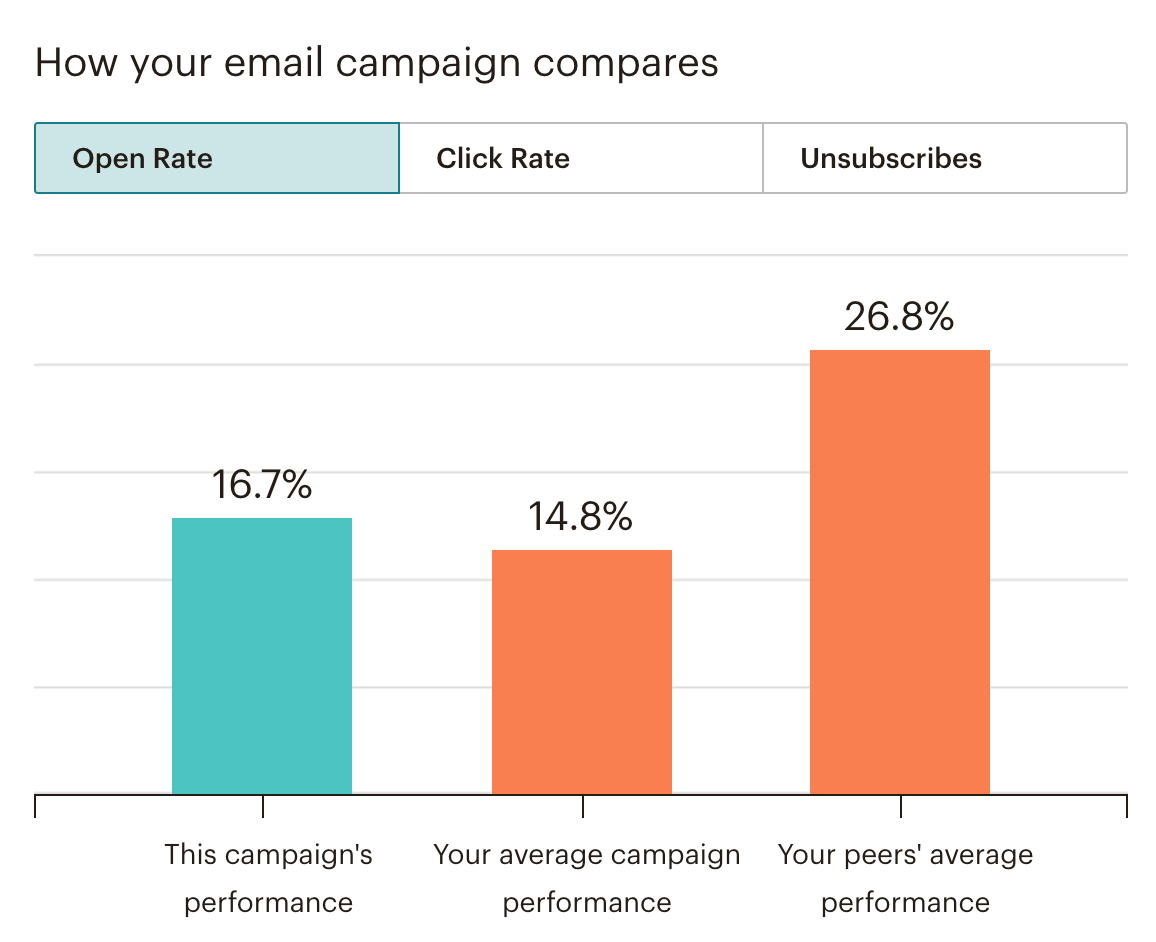
Your email software will tell you key metrics like:
- Email open rate: What percentage of your subscribers opened your emails.
- Click-through rate: What percentage of your subscribers clicked a link in your email.
Google Analytics will tell you what specific actions on your website (such as purchasing a product), your subscribers performed after visiting your website by following a link in your emails.
Resources to Learn More
- How to get more email subscribers – 10 proven ways to get more people to subscribe to your list.
- How to improve your email open rate – 15 easy tweaks to get more people to open your emails.
How to increase email engagement?
These are the six most effective ways to make your email campaigns more engaging:
- Know your customers
- Segment your email lists
- Personalize your approach
- Create dynamic content
- Keep it interactive
- Test, Test, Test
1. Know your customers
Every customer journey is unique. Not every customer will have the same expectation and intent to subscribe. To craft relevant emails, you need to gather as much information about your customer.
Your ultimate aim should be to build comprehensive buyer personas – a composite look of your ideal prospects and customers. It includes information such as customer contact data, descriptive data, and behavioral data.
You can also add their preferences and intent. Based on what action they take and how they behave, you can craft content to propel them through all the stages.
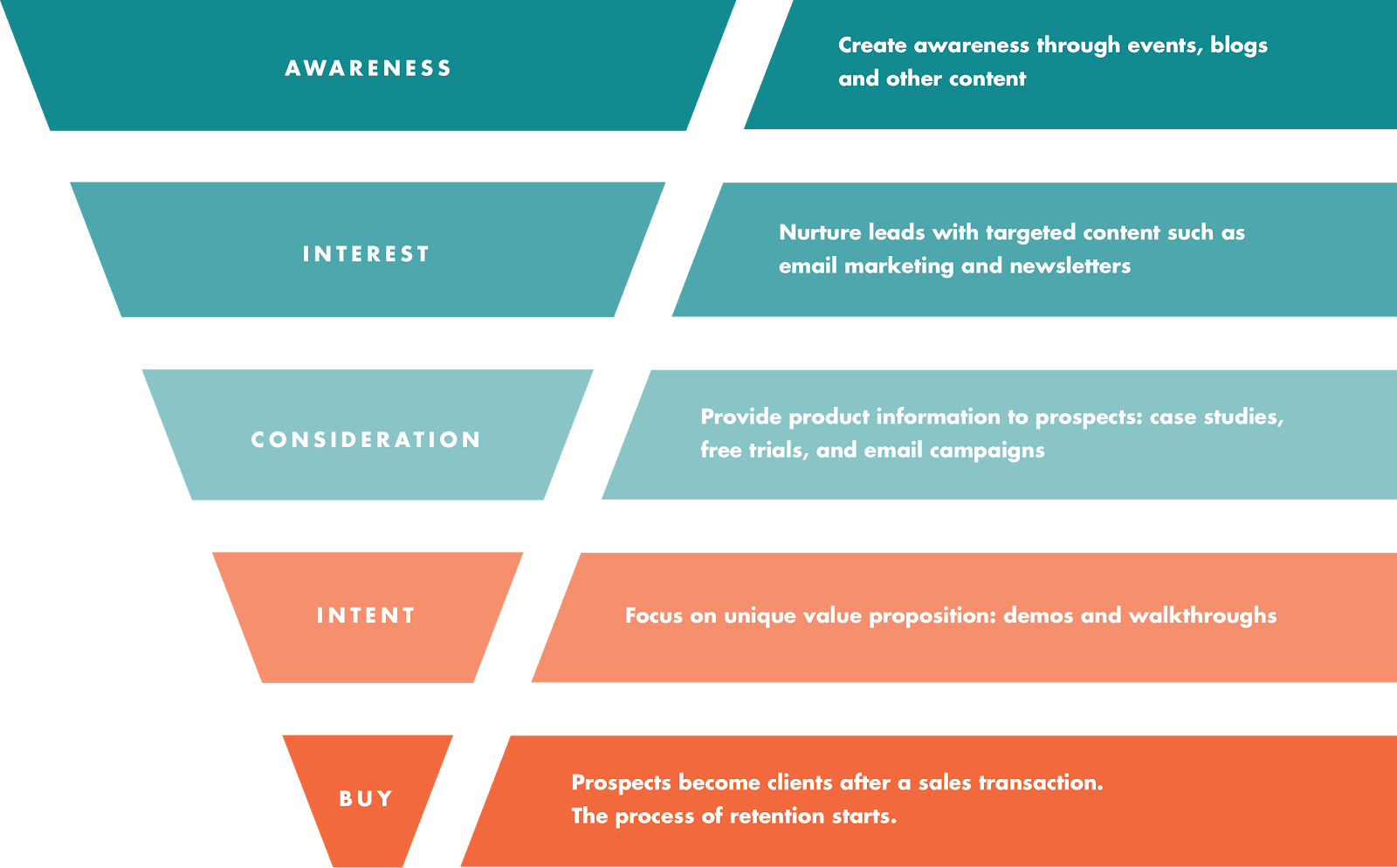
Below are the types of emails you can send at each of the five stages of the customer lifecycle.
The Awareness Stage: It’s the first stage of the customer lifecycle. In this stage, potential customers begin to explore your product or service. They browse through your website or App.
It’s not yet about email. They may start to follow your brand on social channels or make direct visits to your website.
The Interest Stage: At this point, you can get on board the new customers with a welcome email. Impress them sharing exciting content—for example, articles, blogs, newsletters.
The Consideration Stage: The consideration stage is where your customers’ begin to research to ensure that they will make the best possible selection.
Before making a purchase decision, they start comparing your product and service with competitors.
Sending them case studies, product comparison reports are great email candidates for this stage.
The Intent Stage: At this stage, you can email them some of your best customer reviews, testimonials, and reviews.
Send emails, including relevant offers and discounts. It is at this stage they will make a decision to purchase your products or not.
The Purchase Stage: Once customers make a purchase, you can send thank you emailers, customer support, and follow-up emails.
Additionally, eCommerce businesses may also send order notifications, delivery updates, and product recommendations.
Retention: Now, when you’ve successfully converted a prospect into a customer. Your next aim should be to nurture them further. Build long term relationships to turn them into brand loyalists and advocates.
At this stage, you can send them emailers wishing them on their birthday or anniversary. Consider sharing exclusive and valuable content. Send industry-related updates, latest product, and service-related information upgrades, latest offers, and reviews.
2. Segment your email lists
The secret behind some of the most successful email campaigns is email list segmentation. When done right, email segmentation can improve all the email campaign KPIs and increase revenue.
What is email segmentation?
It merely means dividing email list into groups and subgroups based on customer demographics, demographics, psychographics, and behavior.
Traditionally, marketers used basic demographics like age, gender, location, etc. to segment email lists but today, email list segmentation can go beyond demographics.
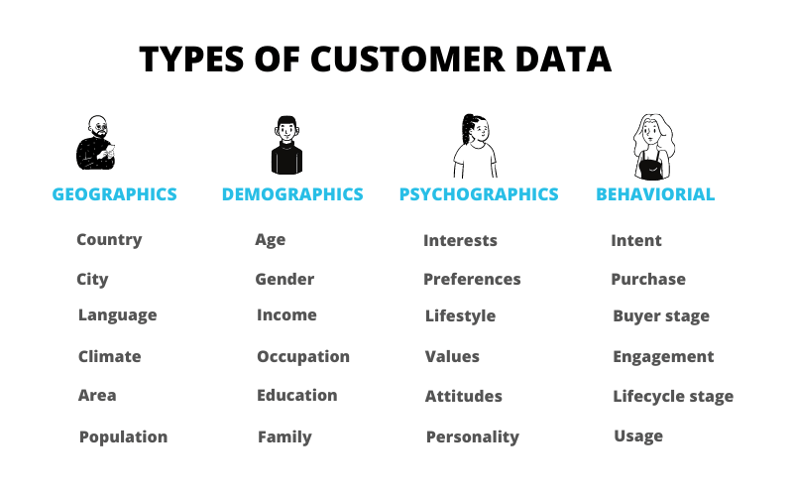
For example, you can group emails of customers who haven’t opened your email in the last 60 days.
Or let’s say you want to target some of your best customers who purchased above $10,000 previous Black Friday. In short, the options to segment email lists are endless.
Here are few out of the box techniques you can consider to segment your email lists:
Buyer Persona – Buyer Personas are a composite look of your ideal customers. It includes customer contact data, descriptive data, and behavioral data.
Engagement – Based on how your customers engage with your email campaigns, you can consider segmenting email lists based on open rate and conversion rate.
Stages of the customer journey – We’ve already discussed how important it is to align your email marketing strategy with the buyer’s journey. Based on what stage your customer is, you can draft relevant emails and dynamic content.
Order Value – Every customer has their way of interacting with your product and service. Not all customers spend the same on your product.
You can consider targeting customers with lower order value by running a targeted email campaign offering them relevant discounts and offers.
Visa Vi, you can also list customers’ emails with higher-order value to drop a “thank you” note for being a loyal customer.
3. Personalize your approach
The next step is to personalize your emails. Personalization, in terms of email marketing, is all about exercising timely one-on-one communication using relevant content.
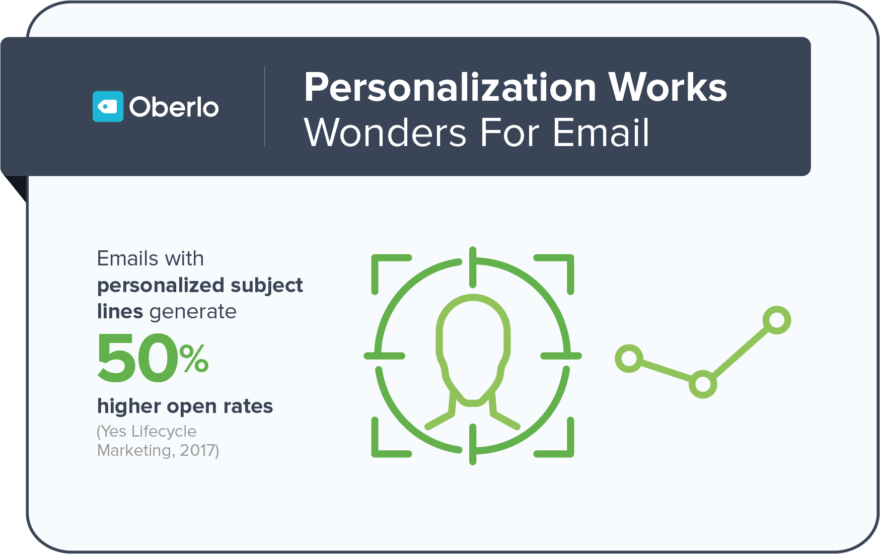
Some of the basic email personalization includes tactics like using a customer’s name in the subject line, creating dynamic content – Copy, design, and images – based on a customer’s gender, location, or other things you know about them.
Some of the advanced tactics include integrating a customer’s recent purchase history, browsing history, and tracking their website behavior to drive relevant campaigns.
Here’s what you can think of personalizing while sending your next email campaign.
Content – Every customer journey is no less than a story. Besides using the customer’s name in the subject line, you can create a personalized message referring to the buyer persona.
Copy – Use unique customer information to compliment your content with personalized Copy. For example, use details like customer name, last product purchased, birth, etc. to create action-driven text.
Images – Based on the type of customer you’re interacting with, you can personalize the image as well.
Also, if you’ve permission to store pictures of customers, you add their photos as well.
4. Create relevant content
In successful email campaigns, the content serves as a muse encouraging consumers to share their thoughts, ideas, opinions, and experiences.
Connect with your customers in a personal and human way, ensuring two-way communication. Refer to the buyer persona to craft personalized and relevant content.
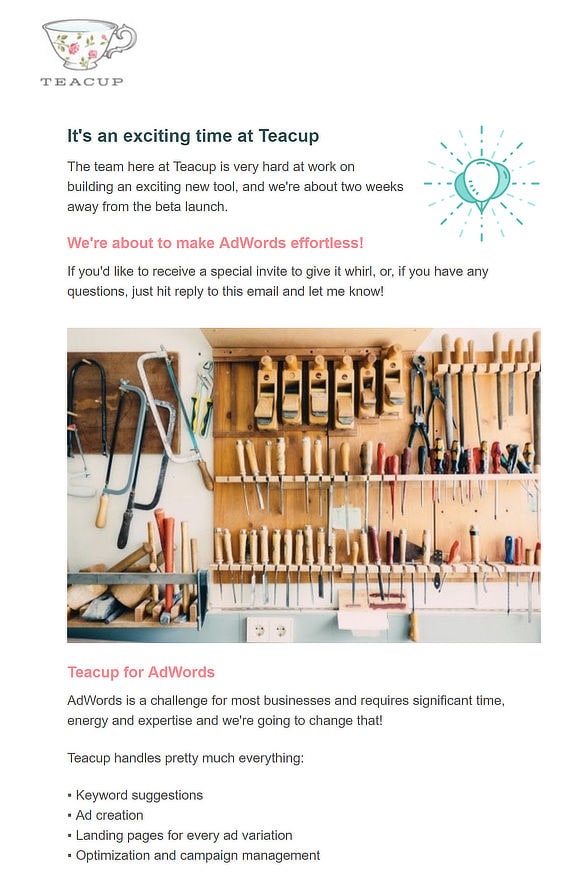
For example, you can share newsletters with links to your best blogs, how-to articles, case studies, webinars, etc.
Below are three ways to make your email content more engaging:
Start from the subject line – Use personalized subject lines that appeal to your customers. Keep the headline crisp, short, and to the point. Use relevant words to strike a chord at an emotional level. Adding emojis is another excellent way to grab attention.
Create Dynamic Content – Keep changing your content as per your customer’s behavior, preferences, and intent. Maintain a conversational tone to connect in a personal way, ensuring two-way communication.
Don’t take design for granted – Design can help enhance the customer experience (CX) further. A well-designed email with the right combination of creative layouts, imagery, and call to actions (CTAs), is responsive.
Here are best practices to ensure an appealing design:
Use grids to guide your customers: Use an Inverted Pyramid design to help customers focus on what’s most important.
Include imagery, graphics, and colors: Grab your customer’s attention by adding colors and graphics as per your brand’s visual guidelines.
Make it easy to read: Use borders, geometric shapes, layouts to showcase what is important. If you’re sending newsletters or any other format which demands lengthy content divide each section effectively.
Make the CTAs stand out: Get your best copywriters on the job to write effective CTAs. Use a box to highlight your CTA rather than a hyperlink.
5. Keep it interactive
Interactive elements are not only fun but also an effective way to increase conversions and click-through rates.
Think outside the box. Find creative ways to utilize these interactive elements in different ways.
For example:
QR Codes: Use QR codes to make your emails look more attractive and engaging. You can use them to reveal special offers, discounts and as invitation passes to an event, etc. Try to create a QR code now for one of your upcoming campaigns.
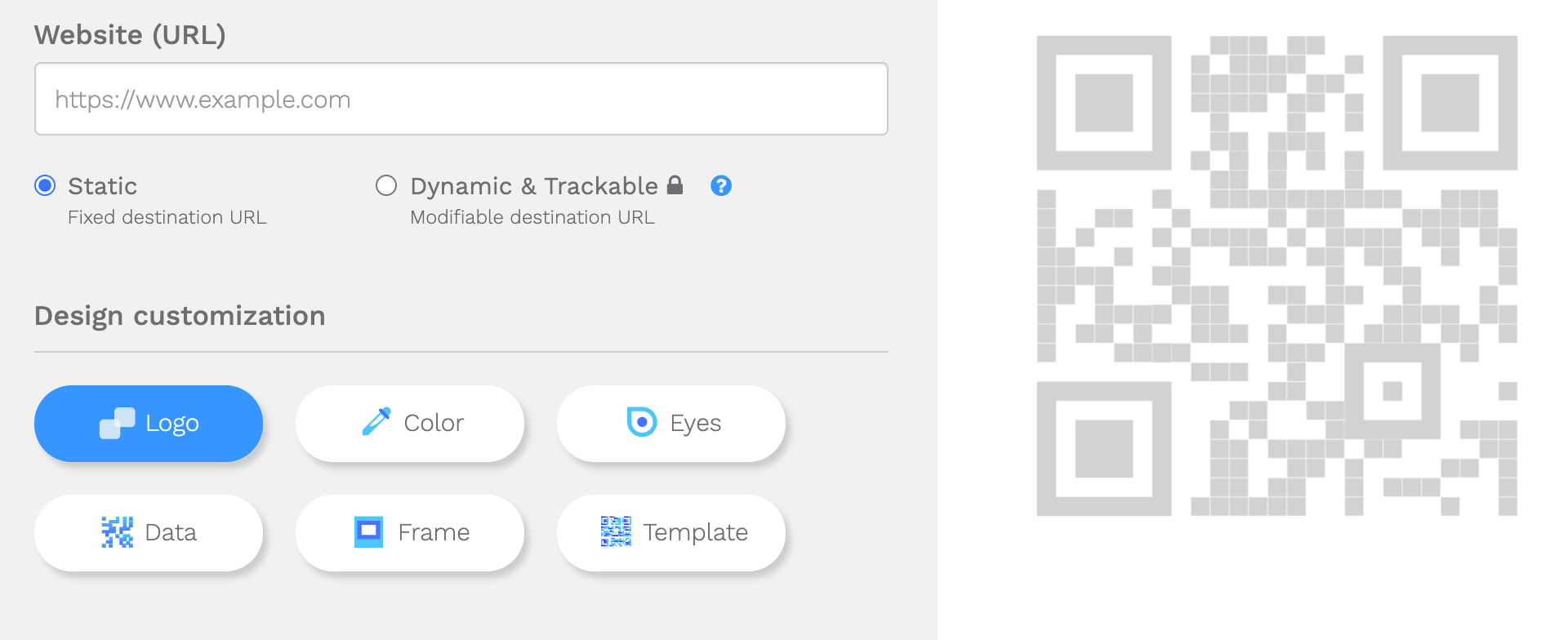
Polls and Surveys: Embed surveys, polls, and reviews in your email instead of sending just a survey link. These are effective ways to gain valuable customer feedback and information and a great way to express that you care!
Videos: Share your content using videos. Distribute content of all sorts creating videos of different genres.
For example, send your customers videos of live events, webinars, product demos, and training programs. You can also do podcasts and video interviews, and so on.
Scratch cards: Take advantage of the curiosity gap using scratch cards in emails to treat your customers with a unique experience. Instead of sending discounts, rewards, or any offer directly, use scratch cards to help customers reveal themselves.
Hamburger Menu: Ever noticed an icon with three lines piled on another? Mostly used as an icon to website menus, these are also known as hamburger menu. Add these to your email layout to increase click-through rates.
6. Test, Test, Test
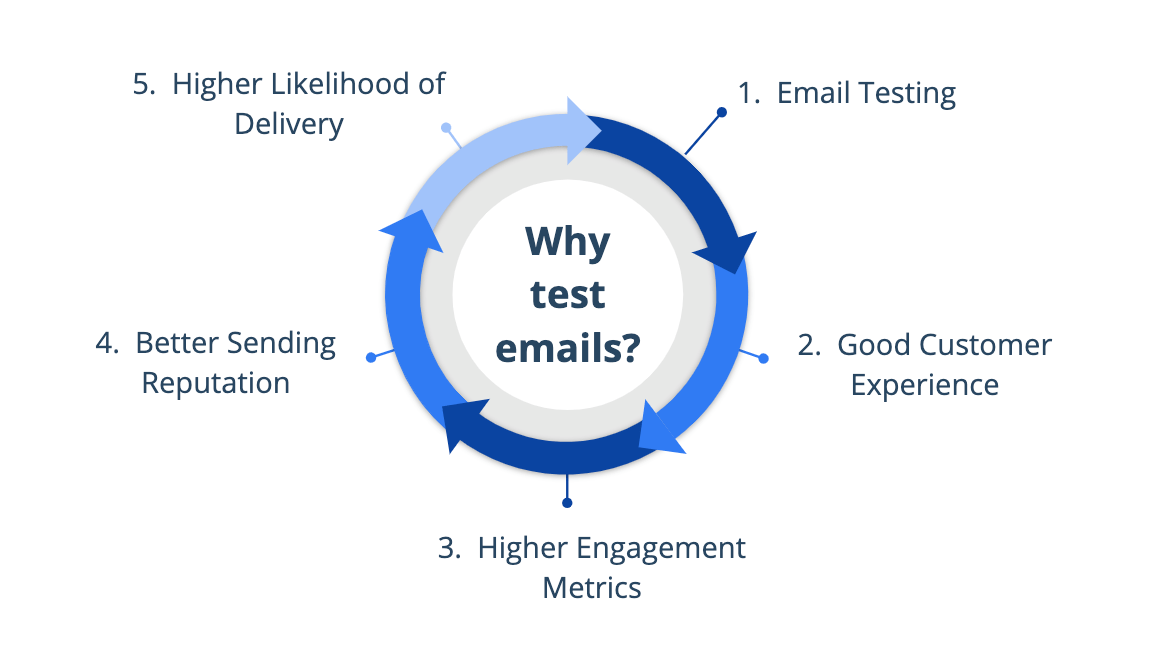
Review your email to prevent embarrassing errors such as typos, repeated, and spam words. Alongside, send a test email to check how each email client displays your email.
There are more than a thousand email clients across the globe. Each supports different features and requires different coding your HTML. Below are six things to test before sending an email
Subject Line: Ensure your subject line stands out and is error-free.
Images: Send a test email and preview your email in all relevant email clients. Often, the images you use can be blocked by email clients. Check for broken images.
CTAs: Check if CTA buttons are working correctly.
ALT text: Text below images help customers understand the content even if the image is blocked. So don’t miss out on the ALT text.
Devices: Given that you’re using a responsive email design, preview your email on mobile, desktop, and tablets.
Interactivity elements: If you’re using GIFs, surveys, polls, or any other interactivity elements in your email design, ensure they’re working correctly.
Key Learnings
Customer engagement is pivotal to marketing. It’s the same in the case of email marketing. The more customers engage, the better you can convert and build relationships.
Only when your customers open an email, click on the calls to action (CTA), a conversion takes place. Hence it’s vital to ensure a higher open rate and click-through rate to increase email conversion rate.
Not only that, but engaged customers also allow you an opportunity to build better relationships. The more relevant your email is, the better you can engage a customer.
The best way to stay relevant to your customers is to know and listen to them. Understand their needs, interests, and expectations at each stage. Only then can you make your email campaigns more engaging.
Here’s what you need to keep in mind:
- Gather as much data about your customers as possible via digital as well as physical channels.
- To create winning email campaigns, use personalization to make your email more effective and engaging.
- Segment your list based on your campaign goals to enhance conversions from your email campaigns.




Very good ideas about email engagement. Thanks for sharing